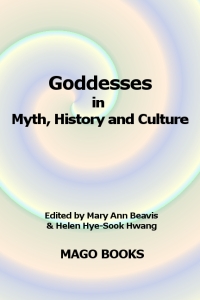 Mago Books Textbook Project: Call for Contributions/Proposals
Mago Books Textbook Project: Call for Contributions/Proposals
Mago Books is seeking contributors for a textbook project on Goddesses in world religious traditions tentatively titled Goddesses in Myth, History, and Culture, eds. Mary Ann Beavis and Helen Hye-Sook Hwang. We are seeking academically qualified contributors (Ph.D. or equivalent) to write chapters under the broadly delineated headings listed below. The editors are open to suggestions for additions/revisions. Contributions may be co-authored.
This project is for an affordable, single-volume academic textbook to be used in undergraduate university courses, in ebook form. Contributions should contain general and introductory content rather than in-depth researched papers on specialized topics, although contributors’ expertise should be reflected in each contribution. Proposals (max. 1,000 words) should identify: the topic or topics you are interested in covering; proposed word count (different topics will require varied levels of coverage); your academic qualifications (please attach an up-to-date CV). Authors selected will be primarily from the Mago Collective, although outside contributors may be solicited at the discretion of the editors. Illustrations such as original photographs, artworks and public domain images are welcome.
Proposed word count: 5000-15,000 words
Font: Times New Roman (12 font size, 1.15 spaced)
Style: Chicago Style, footnotes
Illustrations: As attachment of jpg files (must be 300 dpi)
Final manuscript deadline: January 31, 2017
Deadline for proposals: September 30, 2016
Submission and contact: mbeavis@stmcollege.ca; magoism@gmail.com
Acceptance of any and all content is at the discretion of the editors. Further details will be informed to selected contributors in a timely manner.
Goddesses in Myth, History and Culture
Introduction
Section 1: The Goddess and Pre-patriarchal History
Section 2: Goddesses in Indigenous Religions (First Nations Spiritualities, African Traditional Religions, Australian Traditional Religions, Asian Spiritualities, European Cultures)
Section 3: Ancient Near Eastern Goddesses (Mesopotamia, Egypt, Israel-Canaan)
Section 4: Goddesses of Pre-Christian Europe (Greek, Roman, Norse, Celtic)
Section 5: Hindu and Buddhist Goddesses
Section 6: Goddesses of East Asia (Korea, Tibet, Vietnam, Japan, China)
Section 7: Contemporary Goddess Spiritualties (Wicca, Witchcraft, Goddess Feminism, Thealogy, Asherah Jews, Christian Goddess Spirituality, Goddess in Sufism, Goddess in Today’s Culture)
Conclusion
